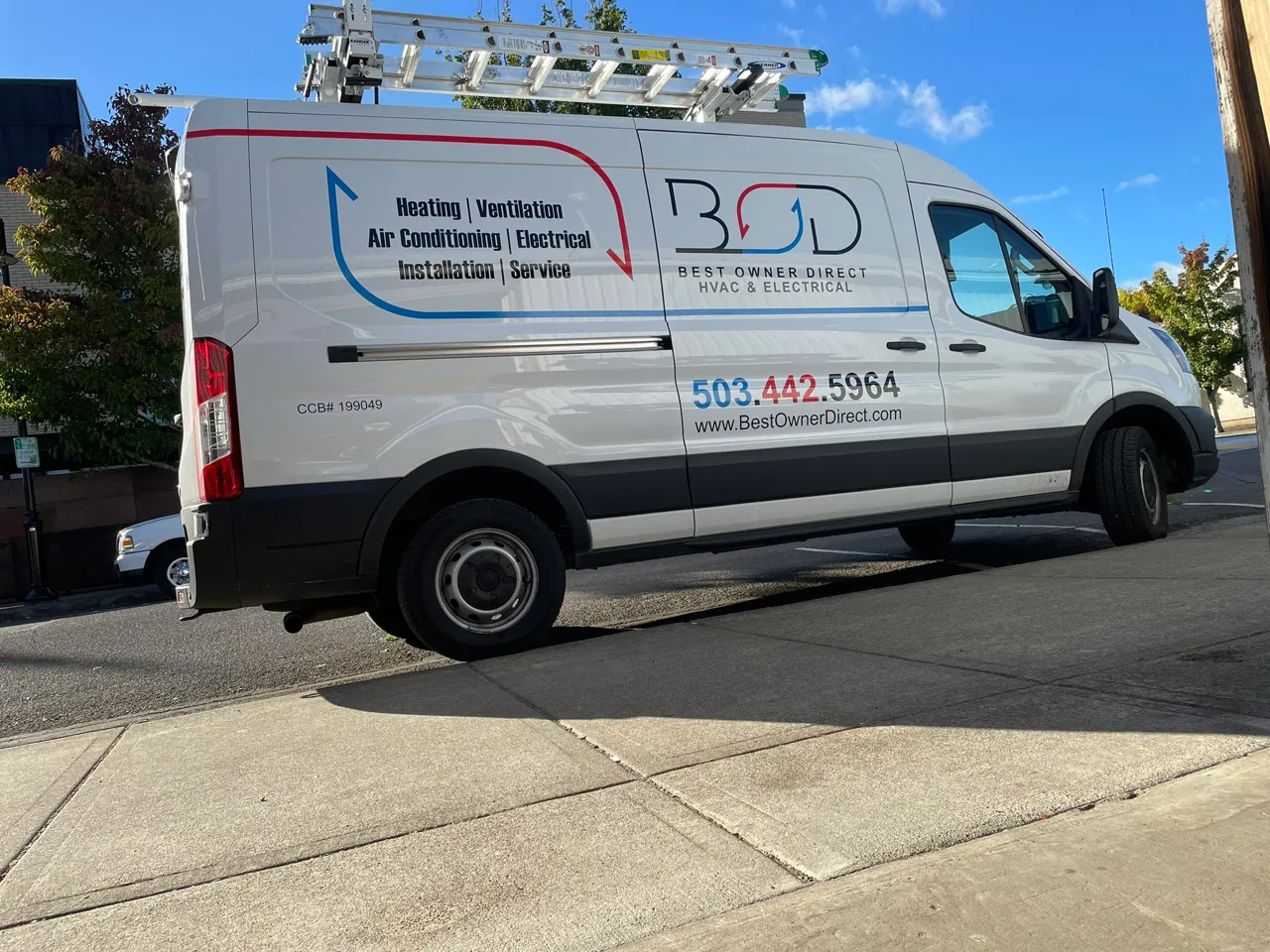Menu
AC Replacement in Carlton, OR
Upgrade comfort with AC replacement from Best Owner Direct HVAC & Electrical in Carlton, OR. Improve efficiency and savings. Call to learn more today!

AC Replacement in Carlton, OR
Replacing your air conditioner is a major decision for Carlton, OR homeowners — one that affects comfort, energy bills, and long-term reliability. With warm, dry summers punctuated by occasional heat waves and a local housing stock that includes many older, compact homes and vineyard-sensitive properties, choosing the right replacement system matters. This page explains when AC replacement is recommended, how systems are evaluated, how to choose equipment and sizing, what removal and installation involve, financing and rebate pathways common in the region, and what to expect from warranties.
When to Consider AC Replacement
- System age: Older than 10–15 years with declining performance and harder-to-source parts
- Frequent breakdowns: Rising repair costs making continued fixes uneconomical
- Major failures: Compressor or coil damage, or units using phased-out refrigerants
- Comfort issues: Uneven room temperatures despite repairs, often linked to undersized equipment or duct issues
- Higher energy bills: Even with regular maintenance, efficiency is reduced
- Comfort upgrades: Desire for quieter operation, humidity control, or better wine cellar/produce storage comfort in vineyard homes
Evaluating Systems for Replacement
A professional replacement evaluation should include:
- Load calculation (Manual J): Determines proper capacity based on home size, insulation, orientation, and climate
- Ductwork inspection: Checks for leaks, insulation, and sizing; older Carlton homes may need sealing or upgrades
- Electrical assessment: Confirms panel and wiring meet new unit requirements
- Refrigerant and compressor check: Helps determine repair vs. replacement
- Indoor air quality review: Evaluates filtration and ventilation, especially in agricultural storage settings
This evaluation leads to an objective recommendation: repair, retrofit, or full replacement.
Equipment Selection: Efficiency and Sizing
Choosing the right system balances efficiency, comfort, and budget:
- Efficiency ratings: Higher SEER for lower seasonal cooling costs; heat pump options should also consider HSPF
- Proper sizing: Prevents short-cycling, humidity problems, and uneven temperatures
- System type: Central split systems for ducted homes; ductless mini-splits or inverter-driven systems for older/renovated homes
- Matched components: Coils, condensers, and air handlers designed to work together maintain efficiency and warranty compliance
- Advanced features: Variable-speed or two-stage compressors improve comfort, humidity control, and noise levels
Removal of Old Units
Proper removal ensures safety and compliance:
- Refrigerant recovery: In line with environmental regulations
- Disconnecting old lines: Electrical and refrigerant lines disconnected and components removed
- Recycling: Old equipment hauled away, metals and refrigerants processed responsibly
- Site preparation: Resetting the condenser pad and preparing the mounting area to meet local codes and drainage needs
AC Installation Process
A professional AC replacement typically follows these steps:
- Finalize system selection and verify local permit requirements
- Site preparation: Includes pad replacement, minor carpentry, or electrical upgrades
- Installation of components: Indoor and outdoor units, refrigerant lines, controls, and thermostat wiring
- System setup: Refrigerant charging, leak checks, and manufacturer calibration
- Performance testing: Startup, airflow balancing, and full operating condition checks
- Walk-through: Explaining system operation, maintenance, and warranty registration
Quality installation directly affects long-term reliability and efficiency.
Cost Drivers for AC Replacement
Factors that influence project cost include:
- System efficiency and features (SEER, inverter technology, variable speed)
- System size and modifications to ducts or electrical panels
- Accessibility and installation complexity (crawlspaces, roof mounts, multi-story homes)
- Disposal and permitting requirements
- Incentives and inspections related to rebates and efficiency programs
Financing and Rebates in Carlton
Homeowners often explore:
- Financing plans: Offered by lenders or installer partners for flexible payments
- Utility and regional incentives: Rebates for high-efficiency equipment or heat pump conversions via Energy Trust of Oregon and local utilities
- Federal tax credits and state programs: Available for certain high-efficiency heat pumps or qualifying systems
Documentation of installation and product details is essential to secure rebates or tax credits.
Warranty Considerations
Key warranty points include:
- Manufacturer warranties: Parts and compressor coverage; terms vary
- Labor/workmanship warranty: Reputable installers provide coverage for installation issues
- Registration requirements: Manufacturer warranties often require timely registration
- Maintenance compliance: Routine maintenance is required to keep warranties valid
- Transferability: Some warranties transfer to new homeowners, increasing resale value
Long-Term Benefits and Maintenance
Replacing an inefficient AC provides lasting benefits:
- Improved comfort and humidity control during Carlton summers
- Lower energy use from correctly sized, efficient systems
- Quieter operation with advanced compressor technology
- Better indoor air quality with enhanced filtration options
To protect your investment:
- Schedule annual maintenance including coil cleaning and refrigerant checks
- Change filters regularly and seal ducts to boost efficiency
- Use programmable thermostats to reduce unnecessary cooling
A properly evaluated and installed AC replacement ensures lasting comfort, efficiency, and peace of mind for Carlton homeowners.
Take the Next Step
Upgrade your comfort and efficiency with professional AC replacement. Contact Best Owner Direct HVAC & Electrical through our Contact page to schedule your consultation. Don’t forget to explore current Promotions and flexible Financing Options to make your replacement project seamless and affordable.


